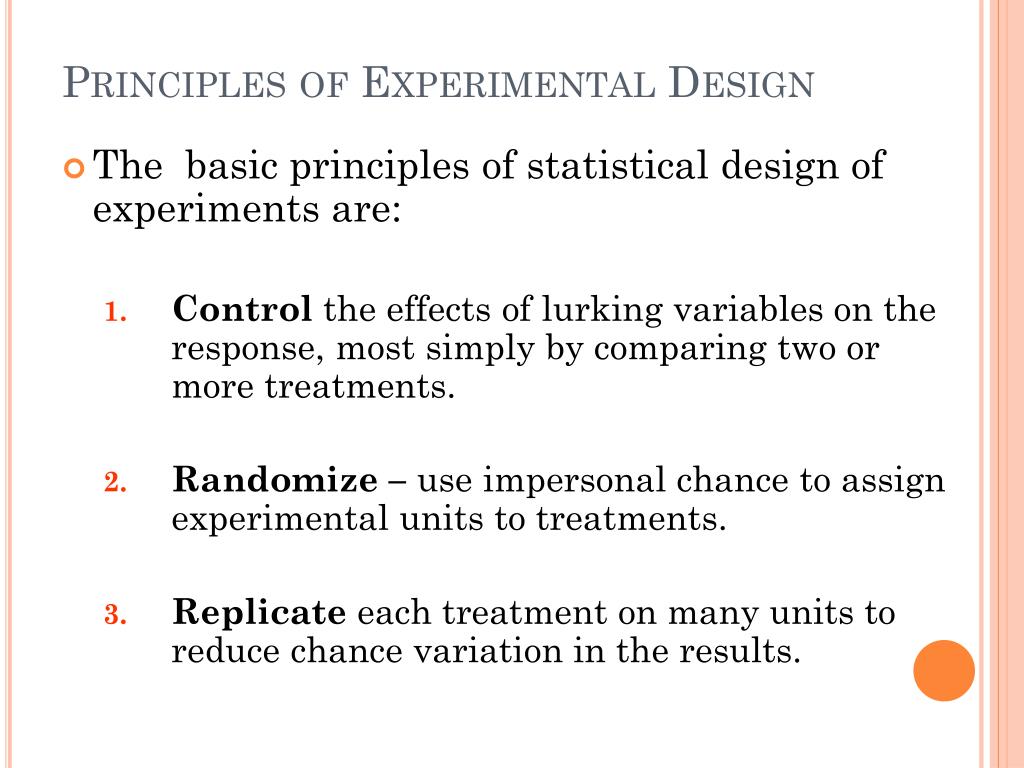Table Of Content

Let’s put these concepts in chronological order so we can better understand how an experiment runs from start to finish. Once you’ve collected your sample, you’ll need to randomly assign your participants to the experimental group and control group. In a common type of experimental design, you will then give both groups your pretest, which measures your dependent variable, to see what your participants are like before you start your intervention.
Famous Economics Experiment Reproduced Thousands of Times - Caltech
Famous Economics Experiment Reproduced Thousands of Times.
Posted: Mon, 03 Aug 2020 07:00:00 GMT [source]
Types of experimental design
With computers, they can simulate complex experiments before they even start, which helps them predict what might happen. This is especially helpful in fields like medicine, where getting things right can be a matter of life and death. Fast forward to the Renaissance (14th to 17th centuries), a time of big changes and lots of curiosity. People like Galileo started to experiment by actually doing tests, like rolling balls down inclined planes to study motion. He'd have an idea, test it, look at the results, and then think some more. This approach was a lot more reliable than just sitting around and thinking.

Frequently asked questions
Within both qualitative and quantitative approaches, there are several types of research design to choose from. As well as scientific considerations, you need to think practically when designing your research. If your research involves people or animals, you also need to consider research ethics. Qualitative research designs tend to be more flexible and inductive, allowing you to adjust your approach based on what you find throughout the research process. In 1950, Gertrude Mary Cox and William Gemmell Cochran published the book Experimental Designs, which became the major reference work on the design of experiments for statisticians for years afterwards.
Adaptive Designs
Researchers might have participants follow a low-carb diet for a few weeks, then switch them to a low-fat diet. By doing this, they can more accurately measure how each diet affects the same group of people. The neat thing about this design is that it allows each participant to serve as their own control group.

Last but certainly not least, let's explore Field Experiments—the adventurers of the experimental design world. In a Sequential Design, the experiment is broken down into smaller parts, or "sequences." After each sequence, researchers pause to look at the data they've collected. Based on those findings, they then decide whether to stop the experiment because they've got enough information, or to continue and perhaps even modify the next sequence.
However, it requires careful planning and expertise to ensure that these "stop or go" decisions are made correctly and without bias. This allows for a more efficient use of resources, as you're only continuing with the experiment if the data suggests it's worth doing so. Firstly, it allows for the study of interventions that are expected to do more good than harm, which makes it ethically appealing.
The Little Albert Experiment - Verywell Mind
The Little Albert Experiment.
Posted: Fri, 02 Dec 2022 08:00:00 GMT [source]
Researchers decide to conduct a study on whether men or women benefit from mindfulness the most. So, they recruit office workers in large corporations at all levels of management. Two teachers have developed a set of math games that they think will make learning math more enjoyable for their students. They then recruit a few people to watch the clips and measure their mood states afterwards. Instead of spending a lot of time and money applying the different mixes to acres of land and waiting several months to see the results, she decides to apply the fertilizer to some small plants in the lab. An agricultural farmer is exploring different combinations of nutrients on plant growth, so she does a small experiment.
In this design, participants are randomly assigned to one of two or more groups, and each group is exposed to a different treatment or condition. Experimental design refers to how participants are allocated to different groups in an experiment. Types of design include repeated measures, independent groups, and matched pairs designs. Imagine coordinating a four-way intersection with lots of cars coming from all directions—you've got to make sure everything runs smoothly, or you'll end up with a traffic jam. Similarly, researchers need to carefully plan how they'll measure and analyze all the different variables.
Experimental Design: Types, Examples & Methods
A famous example of this design is the "Little Albert" experiment, conducted by John B. Watson and Rosalie Rayner in 1920. In this study, a young boy was exposed to a white rat and other stimuli several times to see how his emotional responses changed. Though the ethical standards of this experiment are often criticized today, it was groundbreaking in understanding conditioned emotional responses. Last but not least, let's talk about Meta-Analysis, the librarian of experimental designs. One of the most famous correlational studies you might have heard of is the link between smoking and lung cancer.
All this means is that we wish to determine the effect an independent explanatory variable has on a dependent response variable. An observational study is one in which investigators merely measure variables of interest without influencing the subjects. Sampling means selecting the group that you will actually collect data from in your research. As well as deciding on your methods, you need to plan exactly how you’ll use these methods to collect data that’s consistent, accurate, and unbiased. For example, in an ethnography or a case study, your aim is to deeply understand a specific context, not to generalise to a population. Instead of sampling, you may simply aim to collect as much data as possible about the context you are studying.
It also measures the cause-effect relationship on a particular group of interest. The classification of the research subjects, conditions, or groups determines the type of research design to be used. At the end of three weeks, the researchers give all the participants a questionnaire that measures stress and also take swabs from their saliva to measure stress hormones. She shows the plants to her colleagues and they all agree that further testing is needed under better controlled conditions. So, the doctor applies the treatment to two of their patients with the illness.After several weeks, the results seem to indicate that the treatment is not causing any change in the illness.
This is because it takes place in a real-life setting, where extraneous variables cannot be eliminated. Therefore, it is more difficult to conclude non-experimental studies, even though they are much more flexible and allow for a greater range of study fields. A survey is a tool used to gather relevant data about the characteristics of a population and is one of the most common data collection tools. A survey consists of a group of questions prepared by the researcher, to be answered by the research subject. In this type of experimental study, only one dependent group or variable is considered.
For valid and reliable results, your measurement materials should be thoroughly researched and carefully designed. Plan your procedures to make sure you carry out the same steps in the same way for each participant. However, it also means you don’t have any control over which variables to measure or how to measure them, so the conclusions you can draw may be limited. There are many other ways you might collect data depending on your field and topic. Observations may be conducted in real time, taking notes as you observe, or you might make audiovisual recordings for later analysis.
In most practical applications of experimental research designs there are several causes (X1, X2, X3). Repeated Measures design is an experimental design where the same participants participate in each independent variable condition. This means that each experiment condition includes the same group of participants. Before we dig into the different types of experimental designs, let's get comfy with some key terms.
During the semester, students in a class are lectured on particular courses and an exam is administered at the end of the semester. In this case, the students are the subjects or dependent variables while the lectures are the independent variables treated on the subjects. In an experiment, the independent variable is receiving the intervention being tested—for example, a therapeutic technique, prevention program, or access to some service or support. It is less common in of social work research, but social science research may also have a stimulus, rather than an intervention as the independent variable.

No comments:
Post a Comment